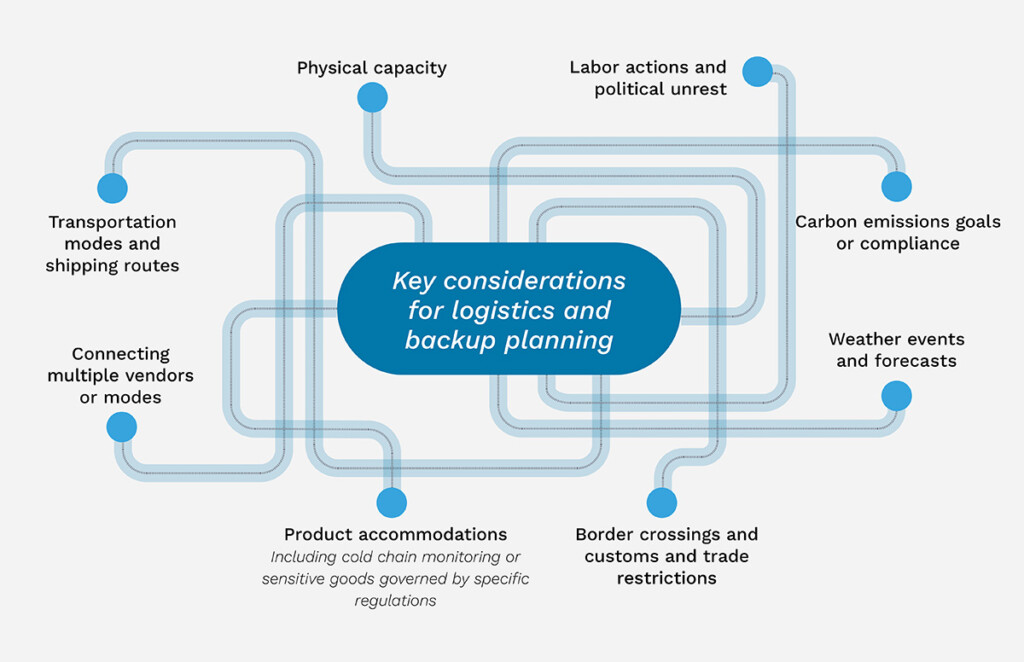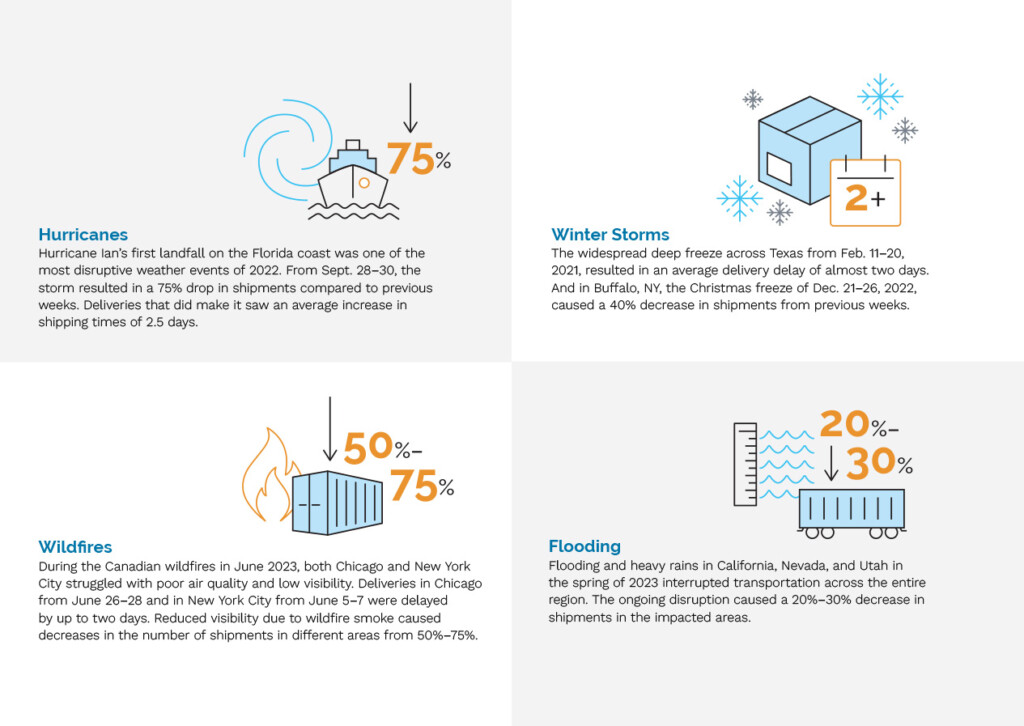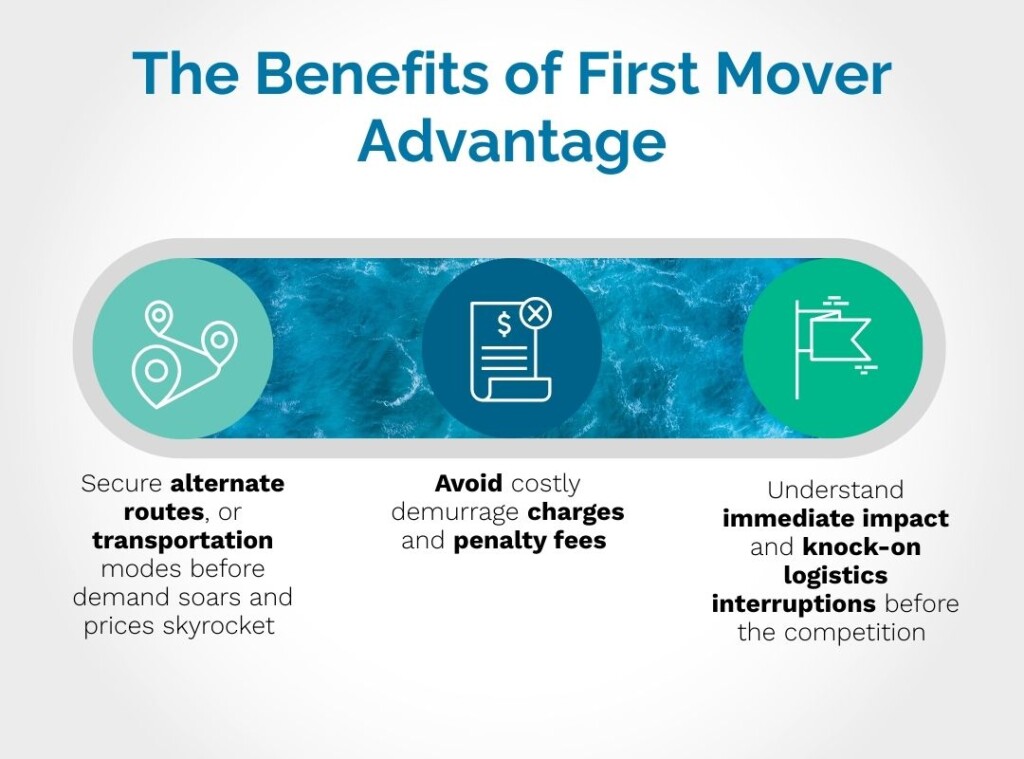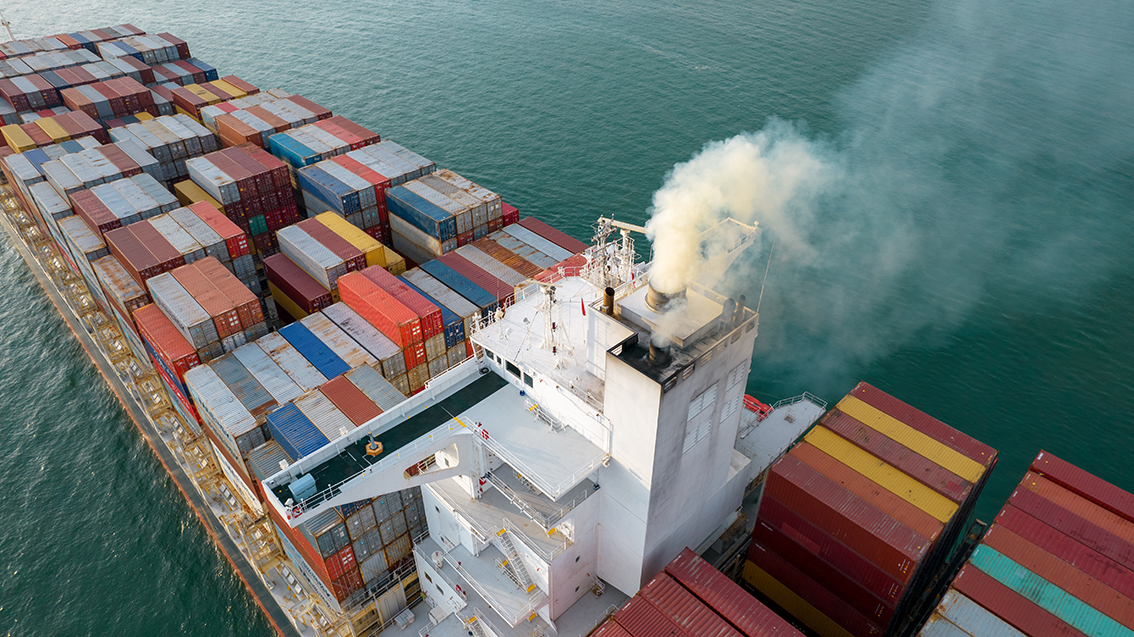Logistics disruptions can feel like lightning strikes – sudden and seemingly impossible to predict. But most logistics risks are far more predictable than you think. More importantly, you can use that predictability to prevent logistics disruptions, and create substantial savings for your business.
Traditionally, logistics professionals focused mostly on efficiency and cost-cutting. Companies built lean, just-in-time systems. These work beautifully, until they don’t.
When disruption strikes, lean operations are brittle. They don’t have the flexibility or agility to respond to disruptive events.
Business operations rely on the steady flow of goods and consistent delivery times. Therefore, logistics failures impact other functions.
This includes supply chain planning, procurement and production teams left waiting for critical inbound goods or raw materials. Sales and financial teams cannot recognize revenue until customers receive complete orders.
With the right tools you can anticipate a risk before it becomes a disruption. The answer lies in shifting from reactive crisis management to proactive, prediction-based logistics risk management.
The Surprising Predictability of Logistics Risk
Logistics disruptions are not necessarily dramatic events. Of course, there have been a number of those in the past decade, such as the Tianjin Port explosion in 2015, or the blocking of the Suez Canal in 2021.
These global events feel random and unforeseeable, reinforcing the belief that logistics risk is largely beyond our control.
But dig deeper into the data, and a different picture emerges. While some events may be impossible to predict, most logistics risks fall into predictable patterns. This gives you the ability to mitigate risk and plan around potential disruptions.

Figure 1: Use the visibility into potential logistics disruptions to form contingency plans
Weather Disruption
Weather-related disruptions represent some of the most common risks in logistics operations. Severe weather events have increased by 83% since 2000, but these events, and their disruptive impacts are highly predictable.
Hurricanes don’t appear out of nowhere. Meteorologists can track them for days or weeks before landfall. Predictive weather analytics can give you 15-day weather forecasts allowing you to plan around extreme weather.
Supply chain risk management solutions for logistics can contextualize this information for your logistics operation. This information can then predict how weather events will impact your locations, shipping lanes, and transportation routes.
Port Disruption
The predictability extends far beyond weather. Port congestion often follows clear patterns based on seasonal shipping volumes, infrastructure capacity, or closures at neighboring regional ports. Weather events or regional instability can predict port closures.
Labor Strikes
Labor disputes build up over months of contract negotiations. By monitoring labor relations and contract expiration dates, it is possible to predict when and where strikes are likely to occur.
Insolvencies
Supplier and carrier insolvencies rarely come without warning signs. Financial monitoring can reveal red flags indicating a logistics service provider is heading toward bankruptcy. By paying attention to these signals, you can make alternative arrangements before a carrier insolvency.
Some risks, like earthquakes, cannot be predicted. But many others exhibit patterns. These patterns can be identified and tracked. As a result, supply chain disruptions can be anticipated, allowing you to make informed decisions to manage risk.





